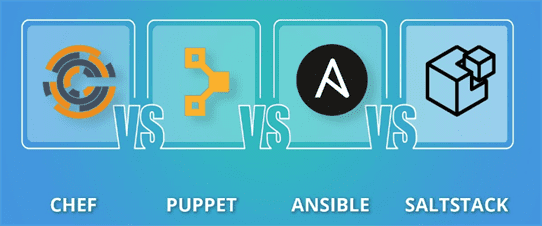Tag: Chef
A Beginner’s Guide to Chef on CentOS 8
What is Chef?

Chef is an open-source configuration management DevOps tool used for configuration and management of multiple systems in infrastructure. Using Chef, we can use so-called recipes and cookbooks to automate and speed up managing multiple systems in our environment. By using Chef, we can adjust every system in our environment to our desired state, which we defined using the code in recipes. In the process, code is continuously tested and deployed using Chef.
How to Install Jenkins on Ubuntu 20.04
How to Install Jenkins on CentOS 8
What is Jenkins?
Jenkins is an open-source software written in Java and Scala. This software allows users the ability to automate almost any task and, it saves significant time that can be better utilized addressing other issues. When automating tasks with Jenkins, users can optimize their workflow by quickly automating the jobs that servers cannot do themselves. In this tutorial, we will learn how to install Jenkins on CentOS 8. We will also explore what its purpose is and share several benefits that Jenkins offers. We will then configure it to run on our CentOS 8 server.
An Introduction to Ansible Playbooks

Ansible is an open-source tool that uses playbooks to enable configuration management, software provisioning, and application deployment. It is primarily written in Python and was released in 2012. Ever since then, it has saved countless hours of often menial work of deploying and maintaining IT infrastructure. Overall, Ansible is very consistent, secure, reliable, and it requires a minimal learning curve. Simply put, Ansible is a powerful tool for automating apps and infrastructure. You can read more about general Ansible information in our recently published article.
DevOps: A New Perspective on Shared Automation
What is DevOps?
DevOps is a set of various tools, practices, and ideals that combine software development (Dev) and IT Operations (Ops) into a single unifying force. It allows for better collaboration between developers, operations teams, system administrators, and system engineers. Their streamlined goal is to continually provide a high-value software product to the customer at high speed while monitoring and improving the overall process than using traditional software and infrastructure management.
How to Install and Configure Chef on Ubuntu 18.04
Introduction
In this article, we will be reviewing the Chef software, how it works, and why it is useful. We will also explore how it is helpful in DevOps. And then, we will install Chef on Ubuntu 18.04.
What is Configuration Management?

Configuration management is the process by which a company or organization defines and tracks the state of its infrastructural resources. Encapsulated in those resources are both physical hardware and software. It is a means to ensure that when changes are made to a system, those changes are tracked, geared toward the ultimate predefined criteria of what state should be.
Using Ansible in DevOps: A Beginners Guide
Introduction
Ansible is a system of configuration management written in Python programming language which uses a declarative markup language to describe configurations. It’s used for automation of configuration and OS setup. Ansible is often used to manage Linux-nodes, but Windows is also supported. It supports work with devices with Python v2.4 and higher installed through SSH connection. In this article, we are going to review the DevOps tool called Ansible.
The Best DevOps Tools for Infrastructure Automation
Today, DevOps teams try to utilize automation as much as possible. This is to cut down on the sheer number of repeatable processes to limit man-hours worked, throttle development efforts, and to reduce the possibility of errors. This is also a business necessity to reduce overhead costs, increase the speed of the CI/CD process and increase customer satisfaction. There are multiple individual areas that need to be automated to have a fully autonomous infrastructure. Luckily, there are various tools we can take advantage of to help us automate our infrastructure and make sure we have well-developed DevOps processes. In this article we will go over the several of the best DevOps tools for our infrastructure systems.
Which one is appropriate for you?

Table of Contents
I. Puppet
II. SaltStack
III. Chef
IV. Ansible
IV. Conclusion
Introduction
Configuring a single server with the required software is a reasonably simple task. However, if numerous servers need to have the same or similar software and configurations installed on them, the process would use numerous man-hours to complete, which would deplete your already strained resources. Without some form of automation, this task can become nearly insurmountable. With this task in mind, new configuration management tools were developed to address the need to deploy new servers with premade configurations and updates, that allowed for a smoother and more manageable automation process. To keep these servers syncing and to manage updates across a broad swath of hosts in a data center or cloud environment, automation tools like Puppet, SaltStack, Chef, and Ansible meet this need.
Our Sales and Support teams are available 24 hours by phone or e-mail to assist.

